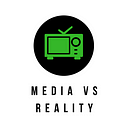Member-only story
Mobile Games — The Addictive Money Sink
How Mobile Games Make Millions Exploiting Addiction
Those innocent little games on the app store. Yes those ones. The free ones. Watch out.
In the modern day, almost everything is optimised to take money out of your pocket. Those free games want you to pay. And they will attempt to psychologically manipulate you until you do.
To put it simply, mobile games are highly addictive products. Game creators have found that using a “freemium” model along with microtransactions is an insanely effective business model.
Let’s take a quick look at the highest-grossing mobile games in recent years:
Candy Crush Saga in 2020: $857 million
Clash Of Clans in 2019: $700 million
PubG Mobile: $2.6 billion
Honor of Kings: $2.5 billion
Companies are making an absolute killing off these little pixelated games on our phones. But how do these companies make so much profit? Who actually spends money on these games? And why?
Well dear friends, let me take you down the rabbit hole of mobile games.
